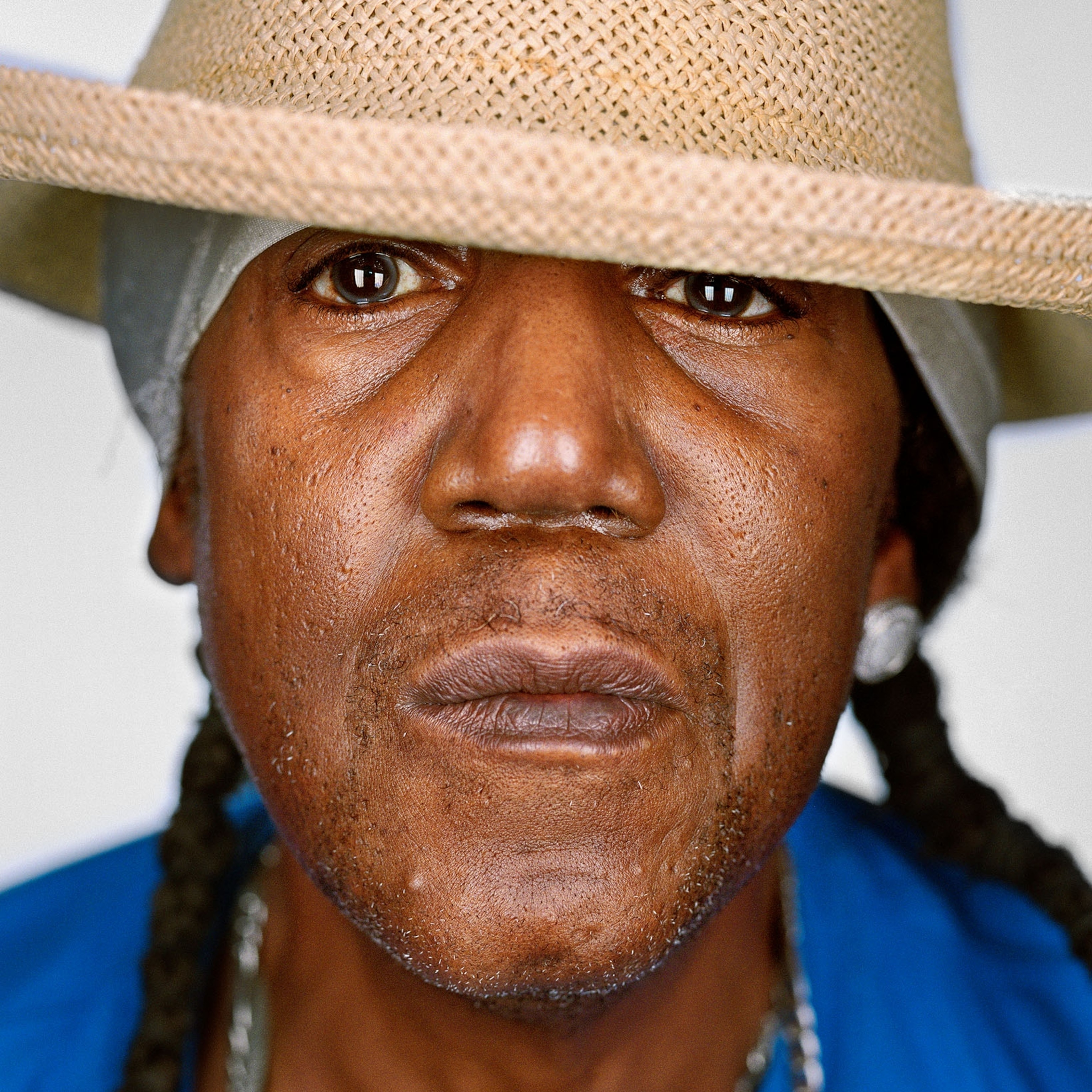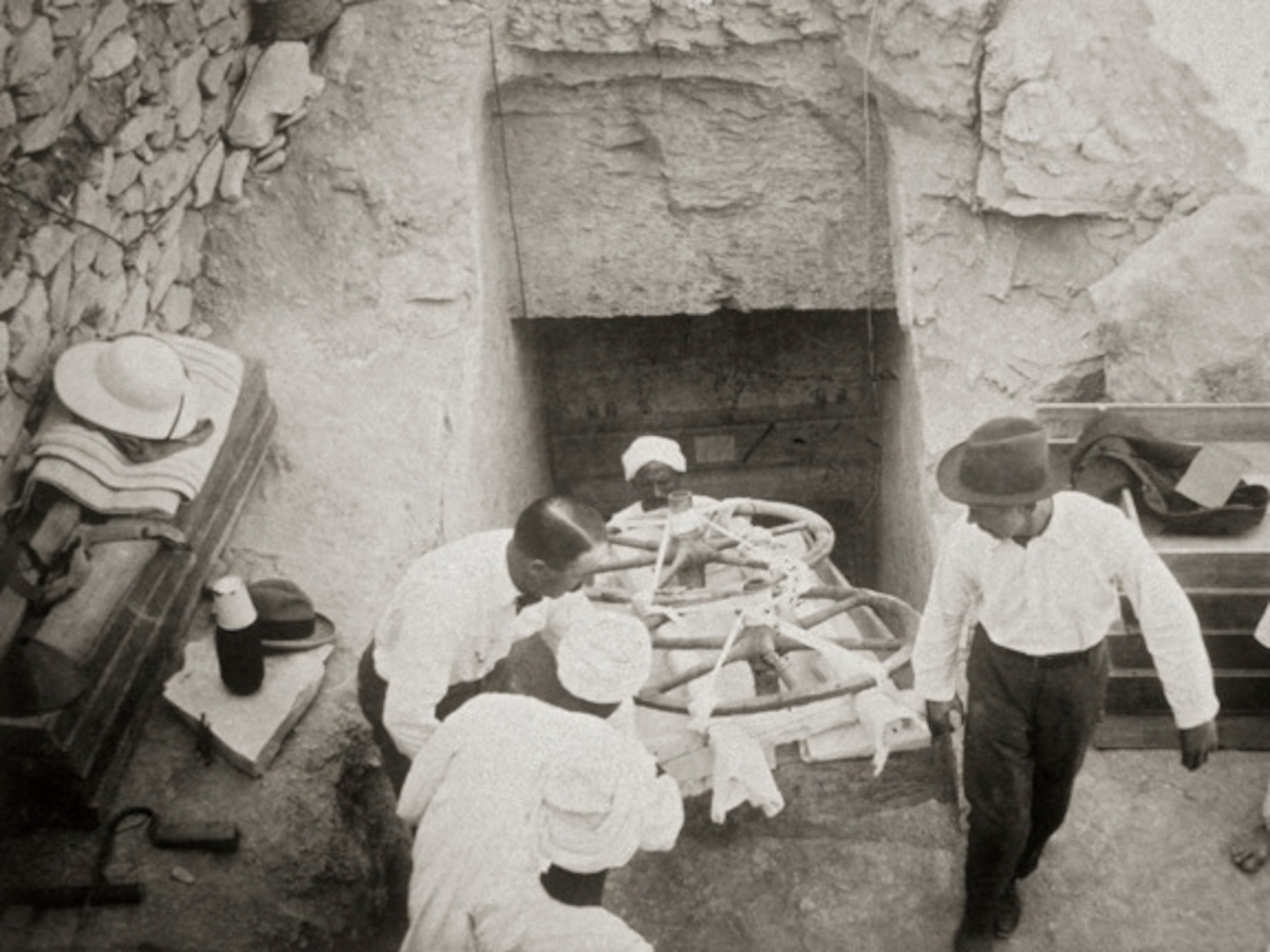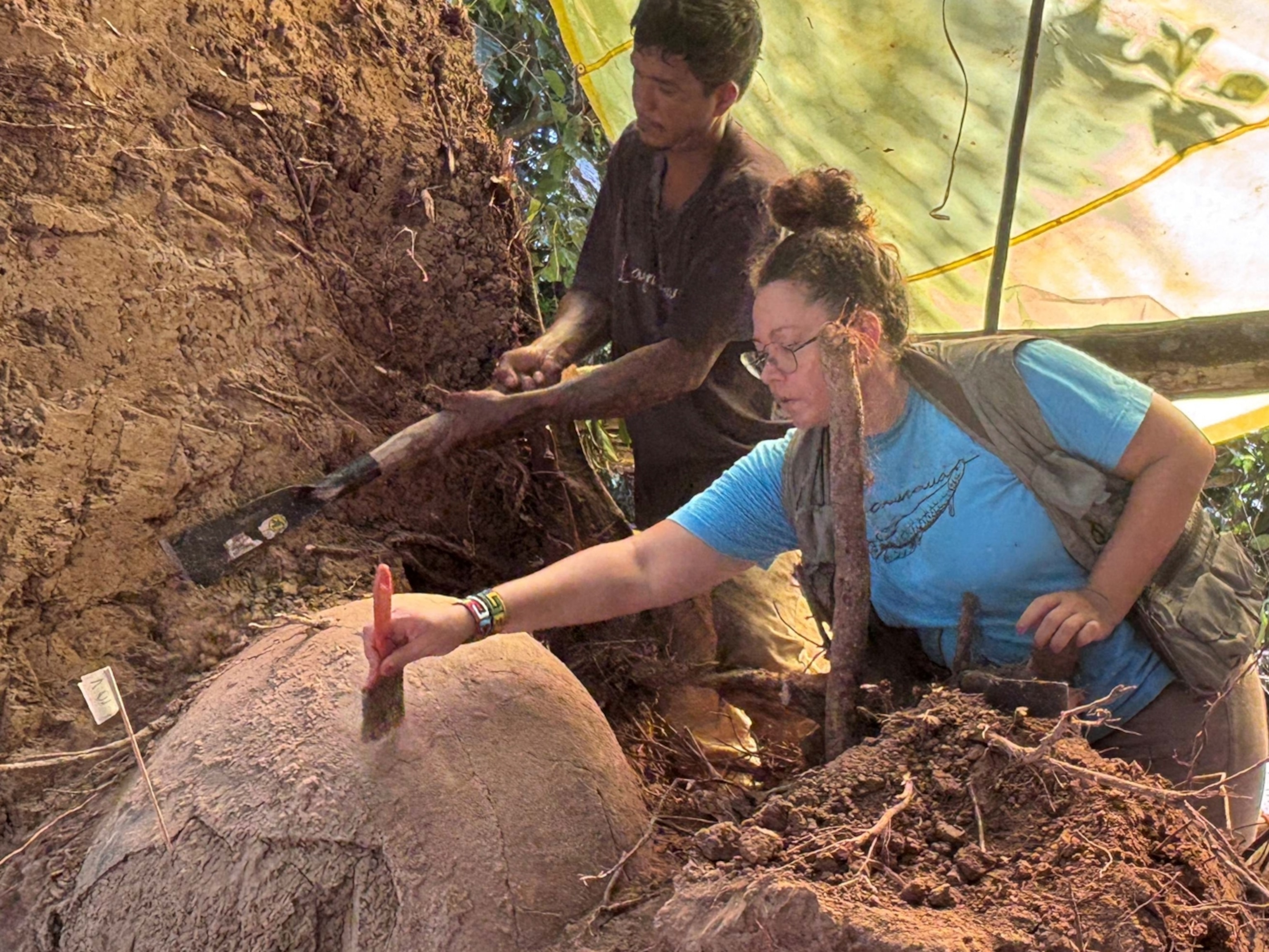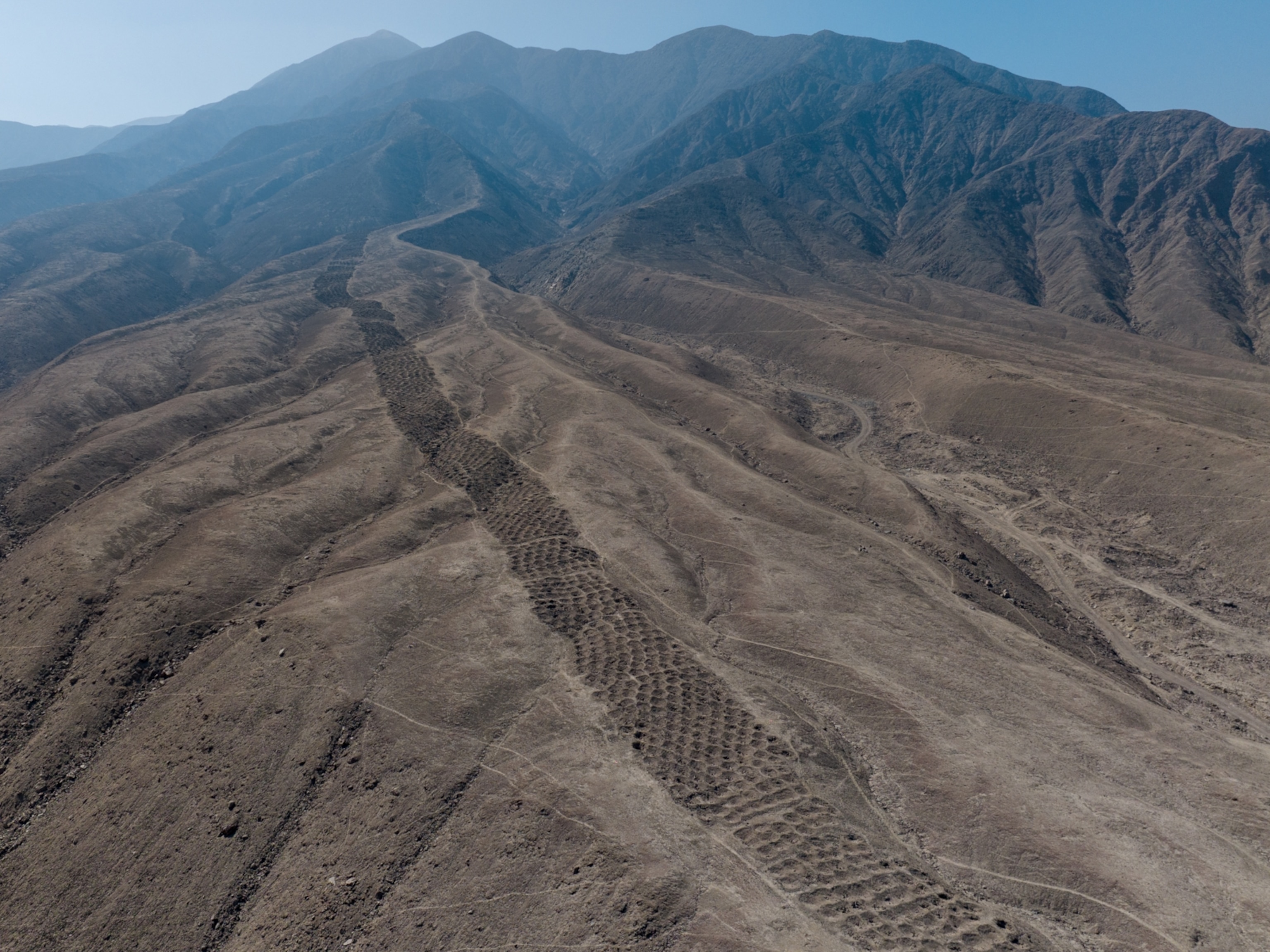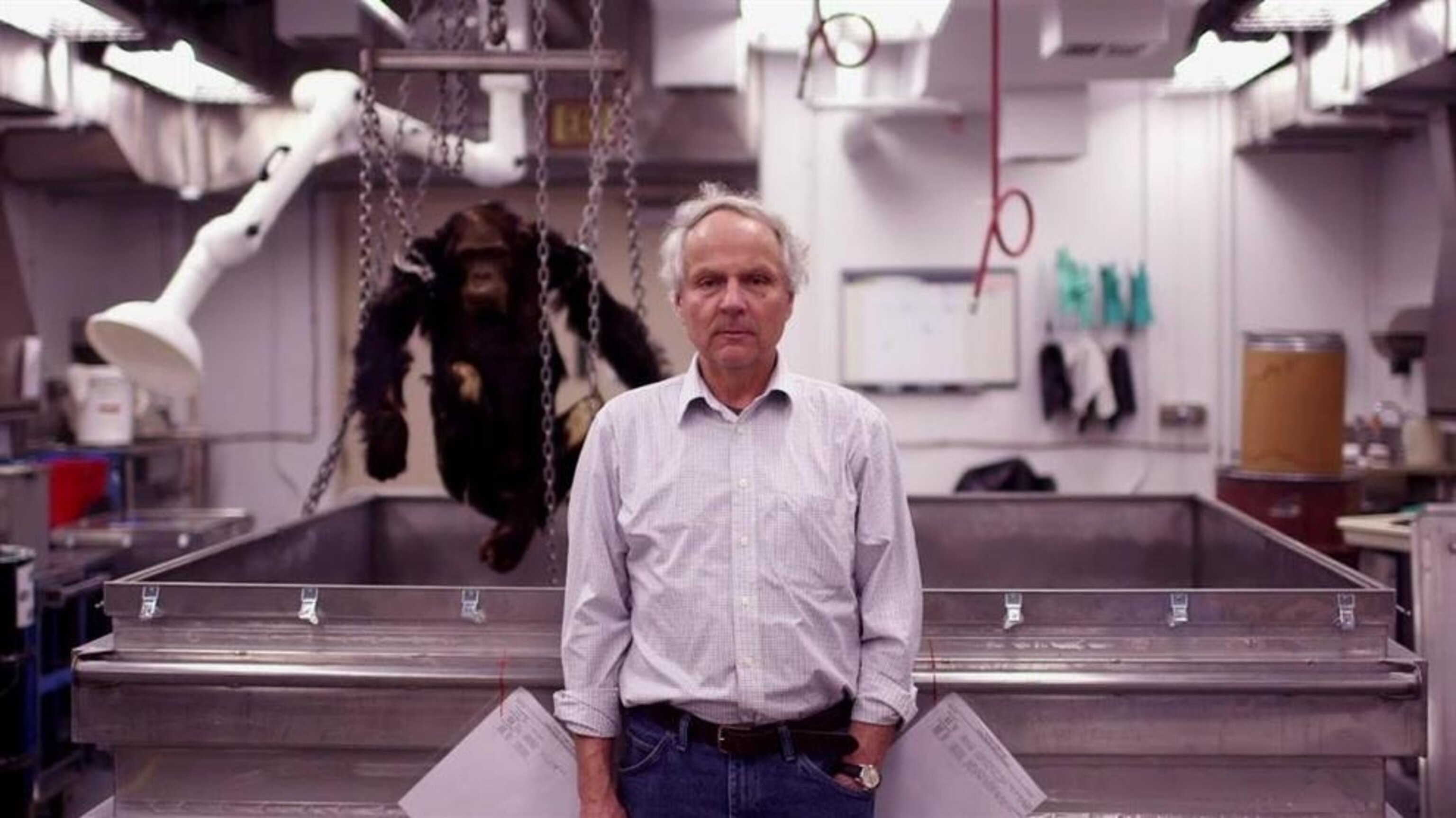
Life After Death: Bruno Frohlich
CT scanners let scientists peer inside objects while keeping them intact. Frohlich has scanned everything from mummies to Stradivarius violins.
Early one morning in Washington, D.C., Bruno Frohlich awaits a delivery at his office on the sixth floor of the National Museum of Natural History. "The apes," he says, "will be here in 30 minutes. I hope your nose is not so sensitive."
Those apes—dozens of long-dead chimpanzees, orangutans, and gorillas conserved in the museum's vast collection of primates—are being scanned because the museum plans to put the CT studies online, where they will be available to all researchers.
One by one, the primates will be removed from the decades-old brine preserving them, placed on the bed of a top-of-the-line CT scanner, and slid into the six-foot-tall (1.8-meter-tall) doughnut-shaped device, where they will undergo 3-D medical imaging to a half-millimeter scale of precision. Then they'll be returned to their pickling liquid and put back in storage.
Wearing jeans, black clogs, and a checked blue-and-white shirt, the Danish-born physical anthropologist, 68, sips a mug of coffee as he waits. "Tomorrow it's gonna stink in here," he says.
The scanner commands half of Frohlich's comfortably cluttered office, which is known formally as the museum's Computed Tomography Laboratory. There's a Geiger counter on a filing cabinet, and a sign above the doorway that says "X-ray On." The walls of the office are lined with lead. On his shelves, a human skull sits next to bits of human backbone. There are also pottery and violin parts, reminders of Frohlich's wide-ranging scanning projects. A combination of scientist and artist, he's put the CT scanner to use in ways no one else has envisioned.
Looking Inside
For the past 15 years, Frohlich's office has been the hub of the Smithsonian Institution's noninvasive study of just about anything nonliving. Just as medical CT scanners enable physicians to detect abnormalities inside patients' bodies, the technology lets scientists peer inside objects while keeping them intact. "In the past, the only way to fully examine something was to cut it open," he says.
Frohlich's work as a physical anthropologist normally involves digging up bones. But since he started using the 3-D imager, he hasn't been able to stop. Smithsonian colleagues keep bringing him more and more items to scan, from dinosaur fossils to Mongolian desert mummies, space suits, amber-encased insects, and dozens of rare and historical musical instruments, including Stradivarius violins, violas, and cellos—more than 16,000 objects in all. A scan of one mummy-like object that curators thought might contain a sacred Egyptian kitten revealed it was hollow.
"Anything you can put through the opening, we've been scanning," he says.
Because of his unconventional talents, Frohlich straddles two worlds: He's mastered both the pure science of anthropology and the applied science of forensics. "Bruno's one of the best forensic anthropologists in the world," says Fredrik Hiebert, National Geographic Society's archaeology fellow. "He has this uncanny ability to look at the dust in the ground at a burial site and tell you what happened there."
Coldest of Cold Cases
Often the stories Frohlich uncovers during his fieldwork involve violence. In Mongolia, he's pieced together murders that occurred as far back as the Bronze Age and as recently as the 1930s: children strangled, women with necks broken, people with their heads smashed, knife wounds, compound fractures—the details of each killing offering insights into the region's culture then and now.
Some of these investigations would qualify as the coldest of cold cases. But Frohlich's work is not limited to the distant past. For nearly 30 years, he's also worked with the FBI and provided specialized, archaeology-based forensic guidance and training to state police investigating homicide and missing-person cases in Connecticut and Vermont, the state he's called home since 1986.
One of the most horrific—and challenging—cases was a murder without a body. In 1986, a 39-year-old Pan Am flight attendant named Helle Crafts was killed by her husband in Newtown, Connecticut. He froze her corpse, cut her into pieces with a chainsaw, and fed the pieces into a wood chipper. (The crime later inspired filmmakers Joel and Ethan Coen to produce Fargo, their 1996 Oscar-winning film.) The police, Frohlich recalls, had identified where their suspect had cleaned the wood chipper—by a river—but not much more. "They came in with flashlights and wearing big boots. But they didn't know what they were looking for," Frohlich says. "This is where archaeology comes into the picture."
Using an archaeological field technique called flotation, the forensic team collected layers of compacted leaves from the ground and put everything in a big tub of water. "Bones sink," Frohlich says. "Leaves float. We found the bones." Besides fragments of skull, they discovered a piece of molar with a crown, which they matched to the victim's dental records. They also found a fingernail with polish matching the color of a bottle in her bathroom and other evidence. In an era before DNA analysis, it was enough to secure a conviction in court. "I don't think we'd have found it using traditional methods," Frohlich says, speaking in his usual modest, understated way.
Path of Curiosity
Making his own path has been a lifelong habit. Growing up in the Danish seaport of Kalundborg, 60 miles (95.5 kilometers) west of Copenhagen, Frohlich developed wanderlust at age 20. He took a job as a dishwasher on a commercial ship and saw Egypt, Yemen, Burma, Thailand, Vietnam, China, and Japan. When he returned home, he entered the Danish military, eventually serving as a liaison to the British army and navy. Then he enrolled at the University of Copenhagen, where he intended to study medicine.
A class in physical anthropology—which combined archaeology with human biology—changed everything for him, setting him on a new journey. Throughout it all, he retained his expansive curiosity.
"I've never wanted to stay in my own little specialized field," he says. "That's how I get into a lot of interesting stuff. I get excited about something and I forget about everything else. I never really think about the consequences."
That's also how he ended up with a CT scanner in his office. Before he had one of his own, he used to take bones and other objects he wanted to scan to a facility in North Carolina where the manufacturer, Siemens Healthcare, let him use one of its machines. One day he showed up with three centuries-old coffins from New England that were filled with sand and bodies. He didn't want to open them, so he wrapped them in plastic to keep the sand from falling into the scanner. "I got some beautiful pictures," he says. "Then during the third one, it suddenly sounded like a train was running through the building. Sand had fallen into the scanner," and the machine broke down.
"I thought that was going to be the end of my career," he says. But when a Siemens executive summoned him to his office, he surprised Frohlich by telling him that he'd decided to donate a used machine to the Smithsonian. "He said it would be cheaper for Siemens to give me a CT scanner than for me to keep coming down and screwing up their equipment," Frohlich says.

That was four machines ago. Now, whenever Siemens finishes training with a new model, the company sends it to Frohlich. "It's been a game changer for our research," he says. "We've proved that we can do a lot of work on very sensitive materials like human remains and funeral objects without being destructive."
More Projects Beckon
The latest machine is only two years old. Frohlich has been using this one and previous models to scan mummies from the Aleutian Islands, Peru, Egypt, and Mongolia as part of research into the origins of heart disease.
"What we've found is that atherosclerosis, or hardening of the arteries, is probably less related to what you eat than to some other factor, such as genetics," he says. "It doesn't matter if you eat a marine diet like Aleuts or a mountain diet like Peruvians. All those populations had atherosclerosis in their arteries." His hope is that such research may help clarify the disease's risk factors.
Although he formally retired a year ago, Frohlich hasn't slowed down. He still puts the scanner in his office to use regularly and keeps a list of projects he's eager to pursue, from examining Civil War-era coffins in Maryland to searching for Vasco da Gama's ships in Oman.
Given all the subjects that interest him, how does Frohlich decide what to work on next? "I haven't quite figured that out yet," he says. "You have to jump into something new when you see it, because sometimes if you wait too long, the opportunity is gone. I always say it's 20 percent science and 80 percent luck, because there's always luck."


